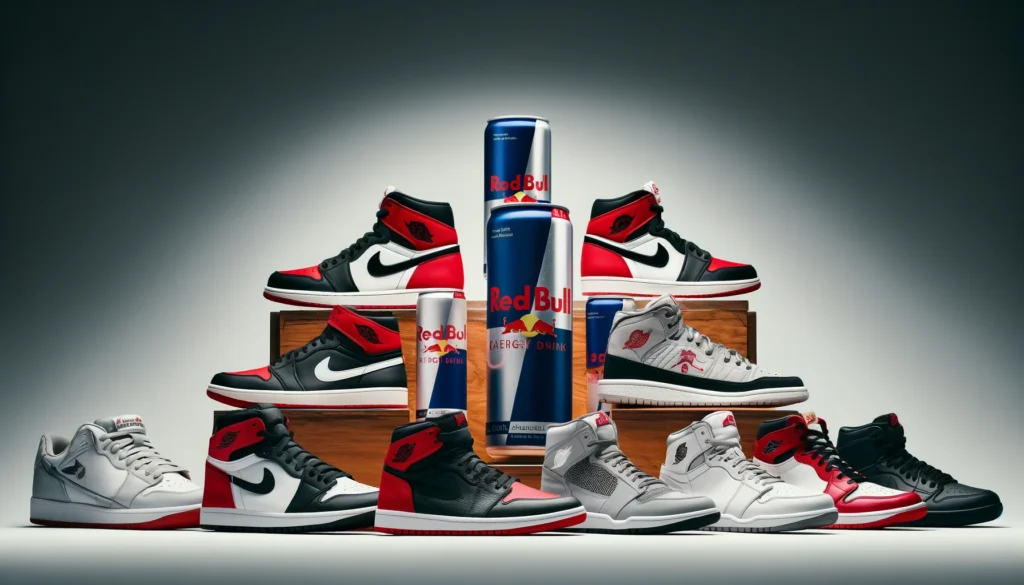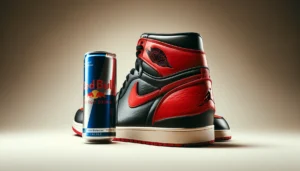Topics Covered
- Turning Adversity into Gold
- Important of Betting on Your Beliefs and Values
- Knowing your audience
- Staying true to what your brand stands for
- Leveraging negativity into positivity
Preface: This post is about how employing strategic approaches to navigate through adversities, you can position your brand not just to survive but to thrive.
Turning Adversity into Advantage
There’s this phrase that stuck with me years ago and every once in awhile I hear it again. The phrase goes something like this, “Negativity Sells. If you want to get people talking… give them something to complain about.” I never quite understood it but then I went down a rabbit hole trying to understand it. What I gathered is that, yes, there’s levels to it.
I’m reminded of a Jay-Z lyric where he says, “Would you rather be a trend or Ralph Lauren.” He was referring to the fact that he and his art are timeless. There’s levels to art and what will be around today vs what will be around 40 years from now.
There’s a clear distinction I want to make when it comes to building your brand around negativity and like Jay-Z’s lyrics, it’s layered. But let’s get into it.
First, I want to emphasize that I agree that negativity helps bring eyeballs to your brand but that doesn’t guarantee sales. There are so many people that get there 15 minutes of fame but then time passes them by as quickly as it came. If you want to use negativity to sell, you have to be willing to be more than just a gimmick for the moment.
There’s 2 mirrors to negativity. One side is represented by the media giving hype around a specific thing and the other side is how that individual or institution deals with it, what I like to call adversity.
So there’s negativity and there’s adversity. When you deal with adversity and use it to your advantage, you can turn a moment into a forever. If you fall into the deep traps of negativity, you can become a trend or worse, a meme.
Inspired by the stories of two legendary brands, I want to dive into how adversity isn’t the end but a beginning, especially in business. These brands came dangerously close to becoming footnotes in history. Yet, they managed to transform their toughest moments into the foundation of their billion-dollar success stories.
Let’s explore these comeback stories and uncover how your biggest hurdles could actually be the blueprint for your brand’s success.
The Story of The Jordan Shoe and Red Bull Energy Drink

Lessons from Jordan
The story of anything Jordan brand related can’t start without me mentioning that Michael Jordan was cut from his high school basketball team. It’s almost a myth at this point but it’s also very true. He then would go on to become one of the greatest basketball players ever. Nothing about Jordan was conventional because he was the blueprint.
Jordan’s response to adversity early on became the cornerstone of the Jordan Brand’s narrative: relentless pursuit of greatness against all odds.
Emphasis on against ALL odds.
There comes a time when things that are always done a certain way collide with a mission and vision with a sole purpose of changing the norm. That’s where Nike and Michael Jordan enter into a collision with the NBA that would forever change the landscape of sports, sneakers, and culture.
When Nike proposed Michael to wear the Jordan 1s to his NBA games, they didn’t know all the chain of events that would follow. This was such a significant catalyst because at that time, wearing shoes that weren’t mandated by the NBA was outlawed.
You know that feeling you get when you feel like you’re doing something significant then out of nowhere you’re hit with the repurcussions and now you want to crawl into a hole? Well, that’s what happened to Nike when the NBA began to fine Michael Jordan. He almost never wore the shoes again until Nike stepped up and said, we will pay the fines every time you wear the Jordan 1’s.
It’s important to note that Nike had never had a signature athlete before and they were going all in on Michael Jordan and his airness, his signature shoes.
When Nike first launched the Air Jordan line in 1984, the expectations for sales were optimistic yet modest compared to the monumental success that would follow. Initially, Nike hoped to sell $3 million worth of Air Jordans by the end of the third year on the market. However, the brand far surpassed these expectations.
In the first year alone, the Air Jordan line generated an astonishing $126 million in sales for Nike. This figure was more than 40 times the initial expectations and marked a significant turning point for both Nike and the basketball sneaker market at large.
Nike made a big bet on Jordan and Jordan made a big bet on Nike. What Nike did, was take the negativity and the ban and used it as the building blocks of adversity they faced to build a billion dollar business.
When your belief in your mission is unshakeable, it demands innovative thinking. Your vision and purpose must be so compelling that every obstacle becomes a stepping stone, fortifying your path forward.
The success of the Air Jordan line was unprecedented and laid the foundation for what would become one of the most lucrative and culturally influential partnerships in sports and fashion history.
The NBA’s ban on the Air Jordan 1s was significant for several reasons, marking a pivotal moment not just in sports history but in the evolution of brand marketing and the sneaker culture. Here’s why:
- NBA’s Uniform Policy: The ban stemmed from the NBA’s strict uniform policy at the time, which required shoes worn by players to match their uniforms and the rest of the team’s footwear. The original Air Jordan 1s flaunted a bold black and red color scheme, which violated the league’s uniform regulations, as they didn’t include the team’s white color. This defiance against conformity was at the heart of the ban.
- Creating a Rebel Image: The ban catapulted Michael Jordan and the Air Jordan 1s into a rebel image. Nike cleverly capitalized on this, launching a marketing campaign that highlighted the ban, with slogans like “The NBA threw them out of the game. Fortunately, the NBA can’t stop you from wearing them.” This narrative of rebellion resonated deeply with consumers, especially young people, who are often attracted to anti-establishment figures and ideals.
- Fueling Demand: The controversy and the “forbidden” aspect of the sneakers created a buzz that fueled consumer demand. It was a classic case of the Streisand effect, where attempting to suppress something only makes it more popular. The ban and the subsequent marketing campaign made the Air Jordans a symbol of defiance and individuality, qualities that appealed to a broad audience beyond just basketball fans.
- Birth of Sneaker Culture: This incident is often credited with laying the foundation for modern sneaker culture. It transformed sneakers from mere athletic wear into symbols of identity, fashion, and self-expression. The Air Jordan 1s became must-have items, and collecting sneakers became a hobby for many, marking the beginning of what would become a multi-billion dollar industry.
- Elevating Athlete Endorsements: The success of the Air Jordan 1s revolutionized the concept of athlete endorsements. Michael Jordan’s partnership with Nike demonstrated the immense potential of aligning brands with athletes not just on the field but as fashion icons and cultural influencers. This opened the door for countless athletes to become brand ambassadors, changing the landscape of sports marketing.
Questions to ask yourself:
Is My Brand’s Response to Challenges True to Our Core Values? In facing adversity, are your strategies and messages aligned with your brand’s core values? How can you ensure authenticity in your response?
How Can Negativity be Repurposed to Serve My Brand? Look at any negativity facing your brand. How can you creatively spin this to reinforce your brand’s message or values?
What Risks Are We Willing to Take? Evaluate the level of risk you’re willing to accept. What are the potential payoffs and pitfalls of these risks, and how do they align with your brand’s long-term vision?
Lessons from Red Bull
I know what you’re thinking as soon as you saw those two words, Red Bull. You almost can’t help yourself from thinking, “Red Bull, it gives you wings.” That’s just the genius of Red Bull is that to many, they believe they’re an energy drink company but if you really pay close attention, at the heart of it all, they are a marketing company.
Red Bull was almost non existence as they faced many challenges on their road to being notable and a house hold name. Red Bull’s entry into the market was met with skepticism, not just because of its unique taste and mysterious ingredients but also due to health concerns that nearly led to its ban in Germany. Yet, Red Bull’s strategic response was to learn into this adversity of being a mysterious drink with mysterious ingredients. They leaned into the controversy and instead of waiting to see if they would get banned they began their guilla marketing efforts to place a red bull in their customers hands. They believed if enough customers said they wanted Red Bull, inevitably it would be hard to outlaw the company as they looked to enter this new market.
So here’s what they did. Understanding the importance of immersive brand experiences, they ingeniously entered bars and clubs, offering free Red Bulls to patrons and strategically placing empty cans around the venues. This guerrilla marketing strategy wasn’t just about product placement; it was about embedding Red Bull into the social fabric of its target audience, creating a buzz that was as organic as it was calculated. This approach, combined with their audacity in the face of potential bans, played a pivotal role in Red Bull becoming synonymous with energy, adventure, and endurance.
Why Red Bull was almost Banned in Germany
Attempted Ban in Germany
- Health Concerns: The primary reason behind the attempted ban of Red Bull in Germany centered around health concerns related to its ingredients, particularly caffeine and taurine. At the time, the effects of these ingredients, especially in combination and in high concentrations, were not as well understood as they are today. There were fears that the drink could pose health risks, leading to scrutiny by health authorities.
- New Product Category: Red Bull essentially created a new category in the beverage market—energy drinks. This innovation brought with it a natural skepticism, as consumers and regulators were unfamiliar with the product and its effects. Introducing a novel category meant facing more barriers in terms of acceptance and safety standards.
- Regulatory Challenges: The attempted ban in Germany exemplifies the regulatory challenges new products often face. Red Bull had to navigate not just market acceptance but also legal and health regulatory landscapes in multiple countries, each with its own set of rules and concerns about health impacts.
Lessons in Overcoming Adversity
In the world of brand building, adversity isn’t just a common occurrence; it’s an opportunity waiting to be harnessed. The stories of the Jordan Brand and Red Bull aren’t just about overcoming hurdles; they’re about making calculated, audacious bets that redefine what’s possible. These brands teach us that with the right strategy, adversity can be the spark that ignites a global phenomenon.
Here are some key lessons you can learn from the stories above
- Adversity as a Catalyst for Innovation: Embrace challenges not as setbacks but as unique opportunities to innovate and differentiate your brand. Both Jordan and Red Bull showcased that obstacles, whether in the form of an NBA ban or health concerns, can serve as pivotal moments to reinforce and amplify a brand’s unique value proposition.
- The Power of Authentic Belief: A deep, authentic belief in your brand’s mission and vision is non-negotiable. This belief fuels the perseverance needed to transcend adversity. Nike’s support for Michael Jordan during the NBA ban and Red Bull’s guerrilla marketing efforts are testaments to the transformative power of believing in your brand’s potential.
- Understanding and Engaging Your Audience: Know your audience intimately. Both brands succeeded by tapping into the lifestyle and aspirations of their target demographics. This connection is crucial for turning consumers into loyal advocates, especially when navigating through controversies or market skepticism.
- Brand Integrity Above All: Stay true to your brand’s core values and identity, even when faced with challenges that tempt compromise. Jordan Brand and Red Bull maintained their brand ethos, leveraging negativity and controversy not just to survive the moment but to strengthen their brand narrative.
- Leveraging Negativity: Transform negativity into a positive driving force for your brand. Both Jordan and Red Bull used negative attention as a strategic advantage, turning potential pitfalls into powerful stories of defiance, resilience, and ambition.
- Strategic Risk-Taking: Be willing to make bold bets based on your vision for the brand. The initial risk taken by Nike on an unproven athlete and Red Bull’s aggressive entry into a new product category underlined the importance of strategic risk-taking in achieving unprecedented success.
- Adaptability and Persistence: Both brands exemplified adaptability in their strategies and persistence in their pursuits. Whether it was adjusting marketing strategies or relentlessly pushing against regulatory challenges, their ability to stay the course was pivotal.
- Building a Legacy: Aim not just for immediate success but for a lasting legacy. The stories of Jordan and Red Bull teach us the value of building a brand that stands the test of time, becoming an integral part of culture and history.







Leave a Reply